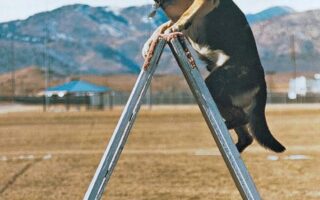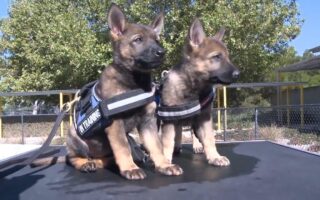Unleashing Potential: The Art of Rottweiler Training
Rottweilers, with their majestic stature and loyal disposition, have carved out a reputation as one of the most formidable yet affectionate breeds in the canine world. Known for their strength and intelligence, these dogs thrive on human interaction and mental stimulation, making proper training not just beneficial, but essential. Whether you’re a first-time owner or a seasoned handler, the path to an obedient and well-rounded Rottweiler begins with understanding their unique needs and characteristics. In this article, we will explore effective training techniques, tips for fostering a strong bond, and insights into the Rottweiler’s behavior, empowering you to transform your canine companion into a well-mannered member of your family. Discover how harnessing their innate capabilities can lead to a harmonious relationship built on trust, respect, and, of course, joy.
Table of Contents
- Understanding Rottweiler Behavior and Temperament
- Essential Training Techniques for Rottweiler Owners
- Building a Strong Bond Through Positive Reinforcement
- Common Training Challenges and Effective Solutions
- Q&A
- In Summary
Understanding Rottweiler Behavior and Temperament
Rottweilers are renowned for their intelligence, loyalty, and confidence, which can significantly shape their behavior and temperament. Understanding these key traits is crucial for effective training. These dogs often display a strong protective instinct towards their families, making them both dependable companions and vigilant guardians. To harness their natural behaviors positively, it’s essential to establish early socialization and consistent training. This not only helps them adapt to various environments but also promotes a well-rounded personality free from excess aggression or anxiety.
To effectively train a Rottweiler, consider the following characteristics that influence their behavior:
- Strong Work Ethic: Rottweilers thrive on structure and duties.
- Desire for Leadership: They respond best when humans take charge.
- Temperament Towards Strangers: They can be wary but can learn to greet visitors calmly.
Establish a training routine that focuses on positive reinforcement, guiding them through tasks that engage their minds and nurture their affectionate side. By integrating their unique personality traits into your training approach, you’ll cultivate a strong bond and positive behaviors that will last a lifetime.
Essential Training Techniques for Rottweiler Owners
Training a Rottweiler requires a blend of patience, consistency, and understanding of the breed’s inherent traits. Rottweilers are intelligent and eager to please, making them highly trainable companions. Begin with positive reinforcement, rewarding your dog for good behavior with treats, praise, or playtime. This not only encourages them to repeat desirable actions but also strengthens your bond. Incorporate short, engaging training sessions to maintain their focus, as Rottweilers can become easily bored with lengthy exercises. Remember to keep your training environment distraction-free, particularly in the early stages.
Establishing clear commands is essential for effective training. Utilize straightforward verbal cues and accompanying hand signals to communicate what you want from your pet. Create a consistent routine that encompasses basic commands such as “sit,” “stay,” and “come.” It can be beneficial to incorporate socialization exercises, exposing your Rottweiler to various people, pets, and environments to improve their adaptability. Additionally, consider enrolling in a training class specifically for large dog breeds, which provides valuable guidance from seasoned trainers and an opportunity for your Rottweiler to interact with other dogs.
Building a Strong Bond Through Positive Reinforcement
Training a Rottweiler using positive reinforcement creates a nurturing environment that strengthens the bond between you and your pet. This approach involves rewarding desirable behavior rather than punishing mistakes, which helps your Rottweiler understand exactly what you expect from them. By using treats, praise, or playtime as rewards, you can motivate your dog to learn commands and tricks effectively. Here are some benefits of using positive reinforcement:
- Encourages Learning: Dogs respond better to rewards, making training sessions more productive.
- Builds Trust: Establishing a routine of positivity fosters a deeper connection based on mutual respect.
- Reduces Anxiety: A focused approach on positive outcomes minimizes fear-based reactions.
To implement a successful training program, consistency is key. Ensure that everyone in your household is on the same page regarding commands and rewards. Keeping track of your dog’s progress can also help highlight their achievements and areas that need improvement. A simple table can visually represent this progress:
| Command | Progress | Reward Used |
|---|---|---|
| Sit | 80% success | Treat |
| Stay | 60% success | Praise |
| Come | 75% success | Playtime |
Through regular practice and reinforcement, your Rottweiler will thrive under this positive training method, allowing for an enriching and fulfilling relationship built on affection and understanding.
Common Training Challenges and Effective Solutions
Training a Rottweiler can pose several challenges, often stemming from their strong personalities and high energy levels. Consistency is key, as this breed thrives on routine. An unclear or inconsistent training approach can lead to confusion, making it crucial for owners to establish a clear set of commands and training sessions. Another common difficulty is addressing their protective instincts; Rottweilers may display dominant behaviors if not socialized properly. Ensuring your dog interacts with various environments, people, and other animals from a young age can prevent aggressive tendencies in adulthood.
To tackle these issues effectively, employing positive reinforcement techniques in training can yield excellent results. Reward-based training helps Rottweilers associate desirable behaviors with positive outcomes, which can promote a well-mannered companion. Here are some effective solutions:
- Structured Routine: Set specific times for training and incorporate it into daily life.
- Socialization Training: Expose your Rottweiler to diverse situations and environments.
- Enrichment Activities: Incorporate interactive toys to keep their minds stimulated.
- Professional Guidance: Consider engaging a professional trainer if challenges persist.
For a visual summary, here’s a simple table showcasing the effective training components:
| Training Element | Purpose |
|---|---|
| Consistency | Builds trust and understanding |
| Positive Reinforcement | Encourages desired behaviors |
| Socialization | Reduces fear and aggression |
| Engagement | Promotes mental stimulation |
Q&A
Q&A on Rottweiler Training: A Comprehensive Guide
Q: Why is training important for Rottweilers?
A: Training is crucial for Rottweilers because it builds a strong foundation of trust and communication between you and your dog. Rottweilers are intelligent and powerful dogs that thrive on structure and guidance. Proper training not only helps in managing their strength but also ensures a well-rounded temperament, enhancing their role as loyal companions and effective protectors.
Q: What age is ideal to start training a Rottweiler?
A: The best time to start training a Rottweiler is during their puppy stage, ideally between 8 to 16 weeks old. This is a crucial period for socialization and learning basic commands. However, training can and should continue throughout their life. Reinforcement of skills and social exposure are essential to keep them well-behaved and balanced.
Q: What training methods work best for Rottweilers?
A: Positive reinforcement is the most effective training method for Rottweilers. This approach involves rewarding desirable behaviors with treats, praise, or playtime, which encourages them to repeat those actions. Consistency, patience, and clear commands are key components. Avoid punishment-based techniques, as they can lead to fear or aggression, undermining the training process.
Q: How can I socialize my Rottweiler effectively?
A: Socialization can be achieved through a variety of experiences. Introduce your Rottweiler to different environments, people, and other animals. Puppy classes, outings to parks, and playdates can foster positive interactions. The goal is for your Rottweiler to feel comfortable and confident in various situations, reducing the risk of behavioral issues in adulthood.
Q: Are there common mistakes to avoid when training a Rottweiler?
A: Yes, several common mistakes can hinder your progress. These include inconsistency in commands or expectations, failing to establish clear leadership, and neglecting socialization opportunities. Avoid over-correcting or using harsh training methods, as this can damage your Rottweiler’s trust. Instead, focus on gentle guidance and reinforcement of good behavior.
Q: How can I deal with stubbornness in Rottweilers?
A: Stubbornness in Rottweilers can often be managed with patience and creativity. Use high-value treats and engaging training techniques to keep their interest alive. Varied training sessions that incorporate play can help maintain focus. Sometimes, breaking down tasks into smaller, manageable steps can ensure they feel successful and motivated.
Q: What are some key commands every Rottweiler should learn?
A: Essential commands include “sit,” “stay,” “come,” “down,” and “heel.” These commands promote safety and solidify control in various situations. Additionally, teaching commands like ”leave it” or ”drop it” can prevent your Rottweiler from picking up harmful items or keeping unwanted objects in their mouth.
Q: How long should training sessions last?
A: Training sessions for Rottweilers should ideally last between 5 to 15 minutes, especially for puppies. Short, focused sessions keep them engaged and prevent boredom. As they grow and learn, you can gradually increase the duration while ensuring that each session is enjoyable and rewarding.
Q: What should I do if my Rottweiler shows aggressive behavior during training?
A: If your Rottweiler exhibits aggressive behavior, it’s crucial to pause training and assess the situation. Understanding the triggers for aggression is essential, and it might be beneficial to consult with a professional dog trainer or behaviorist who specializes in Rottweilers. Addressing aggression requires tailored strategies to ensure safety and improve your dog’s behavior.
Q: How can I maintain training as my Rottweiler matures?
A: Consistent reinforcement is key as your Rottweiler matures. Regular practice of commands and skills you’ve taught, along with introducing new challenges, will keep their minds sharp. Engage in ongoing socialization and consider enrolling in advanced training classes, which can offer fresh perspectives and activities for both you and your dog.
With the right approach to training, you can nurture a well-behaved, happy, and balanced Rottweiler that will enrich your life and make a loyal companion.
In Summary
As we conclude our exploration of Rottweiler training, it’s essential to remember that each dog is a unique individual, shaped by its environment, upbringing, and experiences. With patience, consistency, and understanding, you can nurture a strong bond with your Rottweiler while helping them become a well-mannered companion. Whether you’re embarking on the journey of puppy training or refining skills with an adult dog, the principles of positive reinforcement and clear communication will be your best allies. Embrace the challenges, celebrate the victories, and, above all, cherish the moments of connection. Your Rottweiler’s journey to becoming a loyal, loving partner is a rewarding adventure waiting to unfold—one command, one treat, and one wagging tail at a time. Happy training!


